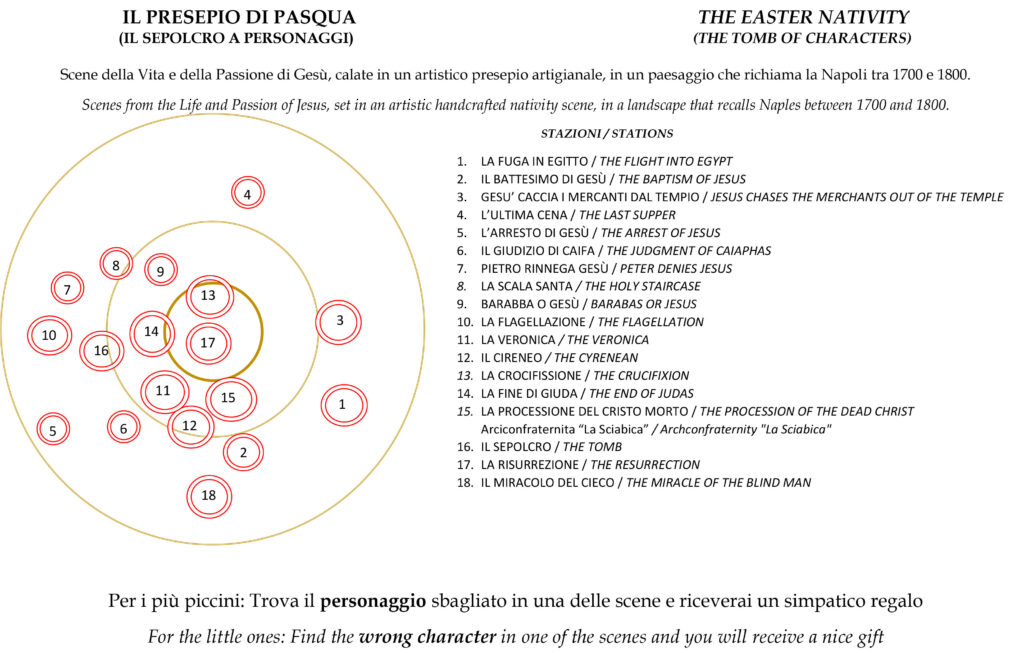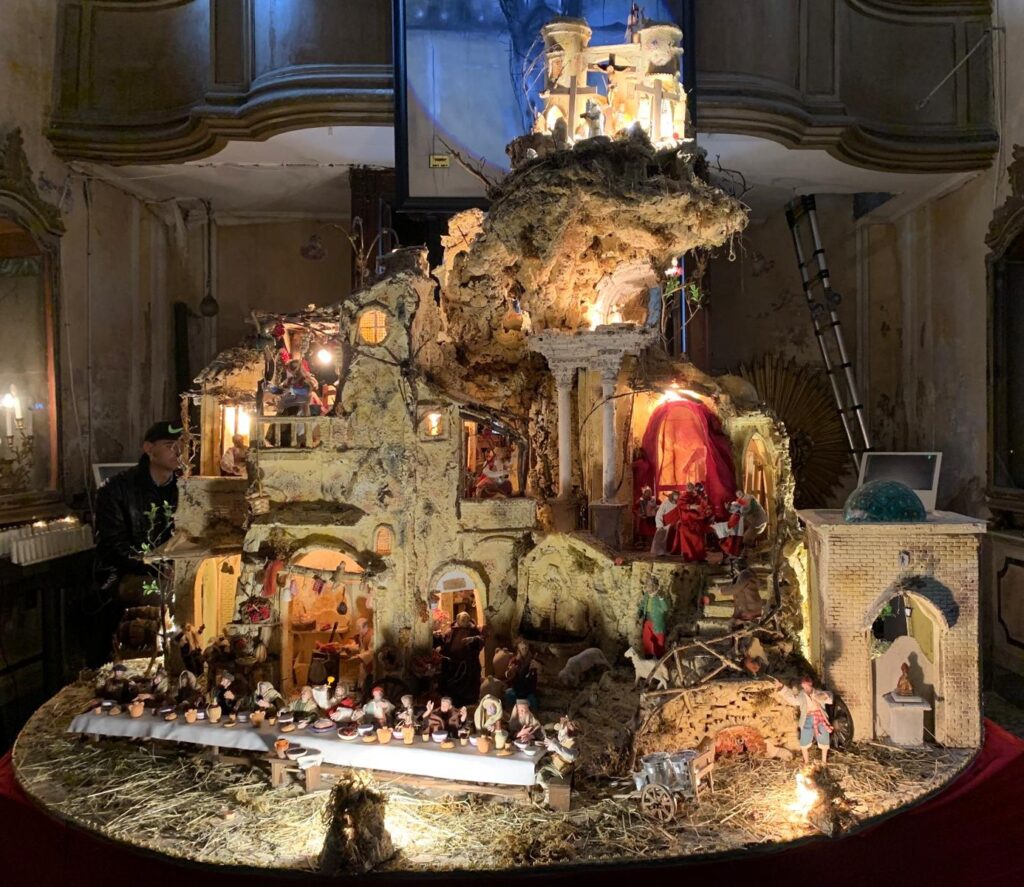Miti, leggende, racconti epici hanno sempre accompagnato l’Umanità con un filo conduttore unico capace di travalicare il Tempo e la Storia. Uno di questi è “l’Archetipo Solare” che descrive un percorso “divino” simile al cammino del Sole durante tutto l’Anno. Il Sole, primordiale fonte di Vita, per le Civiltà Tradizionali, durante il suo ciclo, nasce, si sviluppa e “muore” per poi tornare a risorgere immutabilmente nel Tempo. La concezione della Resurrezione del Sole, trova la sua conferma nella dottrina cristiana, con la venuta di Gesù Cristo: il “Sole” donatore di Vita Eterna che splende all’Alba del Nuovo Giorno, viene ucciso da un crudele tiranno (simbolicamente raffigurante l’inverno) per poi risorgere nuovamente tre giorni dopo il sacrificio sulla Croce. Il Racconto del Cammino del Sole, attraverso il concetto tipicamente greco del ciclo (Napoli è una città fondata dai Greci e che lungamente ha custodito e preservato le Radici greche), interpretato dalla Speranza di Resurrezione, è presente nel presepio napolitano attraverso diverse figure; le più evidenti sono quelle dei Re Magi che simboleggiano il percorso del Sole durante il suo viaggio notturno che termina nel luogo di congiunzione con la nascita del “nuovo sole bambino”.
Nel Presepio in San Nicola a Pistaso, si leggano le tre forme strutturali che fanno riferimento alla Concezione del tempo:
- La forma circolare della base. Questa è la concezione più antica; il Tempo non ha inizio né fine; i Cicli cosmici e naturali si avvicendano in un “eterno ritorno”; le stagioni; i giorni dell’Anno. Le attività umane sono sottoposte al Fato;
- La forma ascendente verticale. E’ la concezione del tempo giudaica. Il tempo a inizio e ha una fine. Al termine di questo percorso progressivo ci sarà la “notte dei tempi”;
- La forma a spirale. E’ la concezione cattolica e vichiana dei Corsi e Ricorsi. Il Filoso Giambattista Vico unisce le due precedenti concezioni e determina l’avvicendarsi ed il ripetersi dei fatti in una linea a spirale (quella assimilabile al DNA) su punti diversi di questa linea e chi sovrintende alle attività umane non è più il fato, bensì la Divina Provvidenza.
Il Presepio di Pasqua è la rappresentazione plastica del Ciclo temporale attraverso scene di Vita, Miracoli e Passione di Gesù Cristo, fino alla Resurrezione, iniziando dalla “Fuga in Egitto, dove compare la figura enigmatica di una “Sibilla Profetessa” che preannuncia il Sacrificio sulla Croce. Diciotto scene animano questo Presepio di Pasqua (meglio definibile come Sepolcro a personaggi). Per l’identificazione delle stazioni, vedasi la legenda.
The solar path in the Neapolitan Nativity scene.
Myths, legends, epic tales have always walked hand in hand with mankind through a leit motiv capable of going beyond Time and History. One of these myths is the “Solar Achetype” describing a “Divine” path similar to the sun trajectory throughout the Year. The Sun, a primeval source of Life for Traditional Civilization, during its cycle goes through birth, rise and death, only to resurrect, immutable, through time. The concept of a resurrection of the Sun finds a validation in the Christian doctrine, with the coming of Jesus Christ, the “Sun” donating Eternal Life shining on the Dawn of a New Day, killed by a cruel tyrant (a metaphor for the winter) to newly resurrect three days after the sacrifice of the Cross. The Tale of the Sun’s path, through the typically Greek concept of cycle (Naples is a city founded by the Greeks, protecting and preserving its Greek roots through the time), seen through the Hope for Resurrection, is expressed in the Neapolitan Nativity scene, by several characters, especially the Three Wise Men symbolizing the trajectory of the Sun through its night journey, ending in the place where it joins with the birth of the “new baby sun”.
In the Nativity Scene in San Nicola a Pistaso, read the three structural forms that refer to the Conception of Time:
– The circular shape of the base. This is the oldest conception; Time has no beginning or end; the cosmic and natural Cycles alternate in an “eternal return”; the seasons; the days of the Year. Human activities are subject to Fate;
– The vertical ascending form. It is the Jewish conception of time. Time has a beginning and an end. At the end of this progressive path there will be the “night of time”;
– The spiral shape. It is the Catholic and Vichian conception of Courses and Recurrences. The Philosopher Giambattista Vico unites the two previous conceptions and determines the alternation and repetition of facts in a spiral line (the one assimilable to DNA) on different points of this line and who supervises human activities is no longer fate, but rather Divine Providence.
The Easter Nativity Scene is the plastic representation of the temporal cycle through scenes of Life, Miracles and Passion of Jesus Christ, up to the Resurrection, starting from the “Flight into Egypt”, where the enigmatic figure of a “Prophetic Sibyl” appears who foretells the Sacrifice on the Cross. Eighteen scenes animate this Easter Nativity Scene (better defined as a Sepulchre with characters). To identify the stations, see the legend.



